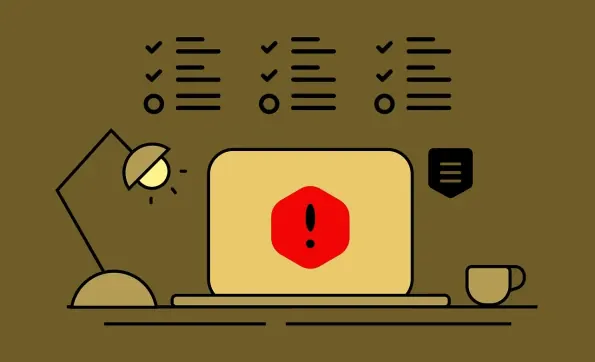In the rapidly evolving landscape of cybersecurity, the sophistication and audacity of modern ransomware groups are becoming more pronounced. This phenomenon was recently underscored by a new report from Halcyon Tech Inc., which delves into the advanced tactics employed by the Arcus Media ransomware group. Emerging in June and quickly linked to high-profile attacks on firms like DatAnalitica, Arcus Media has demonstrated a formidable arsenal of techniques designed to maximize their impact and exploit vulnerabilities.
Advanced Privilege Escalation Techniques
Leveraging ShellExecuteExW API
One of the standout techniques in Arcus Media’s playbook is their ability to elevate privileges when administrative access is not available. By using the ShellExecuteExW API, the ransomware can re-execute itself with high-level permissions. This ensures the malware maintains its processes without interruption, posing a significant challenge for traditional security measures. This method not only allows Arcus Media to gain elevated access but also ensures its persistence within a system, continuously evading detection by typical security protocols.
The ShellExecuteExW API is particularly insidious because it operates within the system’s native capabilities, making it harder for security software to distinguish between legitimate and malicious activities. By executing commands with administrative rights, Arcus Media can access, modify, or encrypt files that would normally be protected from such intrusions. This sophisticated technique highlights the importance of robust privilege management and stringent access controls in defending against ransomware attacks.
Identifying and Terminating Critical Processes
In addition to privilege escalation, Arcus Media targets business-critical applications such as SQL servers and email clients. They employ the CreateToolhelp32Snapshot API to identify and terminate specific processes, effectively crippling an organization’s operational capabilities. This targeted approach ensures that the ransomware can perform its encryption activities without interference from essential services or applications that might otherwise prevent or mitigate the attack.
By focusing on critical processes, Arcus Media amplifies the urgency and pressure on their victims to pay the ransom. Disabling key functions can halt business operations, leading to substantial financial losses and reputational damage. The use of the CreateToolhelp32Snapshot API adds another layer of sophistication to their operational tactics, demonstrating a keen understanding of both technological vulnerabilities and the human factors that influence decision-making in crisis situations.
Sophisticated Encryption and Deletion Methods
Utilizing ChaCha20 and RSA-2048 Ciphers
Arcus Media’s encryption strategy is equally sophisticated, employing the ChaCha20 cipher for file encryption and RSA-2048 for securing encryption keys. This dual approach balances speed and effectiveness, enabling the ransomware to encrypt files rapidly while ensuring that the keys necessary for decryption remain securely out of reach. By partially encrypting larger files and appending a unique “[Encrypted].Arcus” file extension, they increase the complexity of recovery efforts.
The use of modern encryption ciphers emphasizes the evolving challenge posed by ransomware. Traditional decryption efforts become futile when faced with such robust encryption standards. Furthermore, the appending of unique file extensions acts as a clear indication to victims of the specific ransomware variant involved, adding psychological pressure to seek a resolution quickly.
Deleting Shadow Backups and Disabling Recovery Systems
In an effort to further complicate recovery, Arcus Media deletes shadow backups and disables recovery systems using commands such as vssadmin delete shadows and wevtutil cl Security. By erasing critical recovery points and logs, the ransomware ensures that traditional recovery methods are rendered useless. This tactic not only frustrates recovery efforts but also forces businesses into an even more vulnerable position, often leading to the payment of the demanded ransom.
The ability to remove backup data and disable recovery mechanisms underscores the advanced nature of the Arcus Media operation. It highlights a comprehensive approach to ransomware deployment, one that considers and executes measures to nullify a victim’s potential remedies systematically. By doing so, Arcus Media increases their leverage and the probability that affected organizations will acquiesce to ransom demands.
Persistence and Stealth Mechanisms
Registry Autostart Entries
Persistence is a critical component of Arcus Media’s strategy. The malware creates registry autostart entries, ensuring it relaunches even after a system reboot. This persistence mechanism is vital for maintaining control over infected systems and prolonging the ransomware’s presence. Although there is a known bug that occasionally disrupts this process, the strategy remains effective in many cases, keeping the ransomware active and operational across system restarts.
Registry autostart entries embody a methodical approach to ensuring the ransomware’s omnipresence within the infected system. This capability makes detection and removal significantly more challenging, as standard reboot-and-recovery strategies prove ineffective. It emphasizes the need for security solutions that can identify and remove such persistent threats, even at low system levels.
Command-and-Control Operations via TOR
For stealthy communication, Arcus Media uses TOR and encrypted channels for their command-and-control operations. This method serves to mask their activities, further complicating efforts to trace and disrupt their operations. The use of encrypted communication channels highlights the group’s emphasis on maintaining operational security and anonymity, making it challenging for cybersecurity professionals to identify and dismantle their networks.
Using TOR for command-and-control operations allows Arcus Media to maintain a low profile while coordinating their ransomware activities. This approach not only preserves their anonymity but also enhances their resilience against takedown efforts by cybersecurity authorities. As defenders continue to counteract these threats, understanding and adapting to these advanced techniques is crucial for effective defense strategies.
Conclusion
In the swiftly changing world of cybersecurity, the complexity and boldness of today’s ransomware groups are becoming more evident. This trend was highlighted in a recent report from Halcyon Tech Inc., which explores the advanced methods used by the Arcus Media ransomware group. Emerging in June, this group has been quickly associated with significant attacks on companies such as DatAnalitica. Arcus Media has showcased a powerful set of tactics meticulously crafted to maximize their harm and take advantage of security weaknesses.
The report from Halcyon Tech Inc. details how Arcus Media employs a variety of sophisticated strategies aimed at achieving their malicious goals. These tactics include exploiting software vulnerabilities, using social engineering to manipulate individuals into disclosing confidential information, and deploying advanced encryption techniques to lock up valuable data. The audacity of Arcus Media is evident in their ability to launch high-profile attacks and their willingness to target major firms. By understanding these methods, cybersecurity experts can better prepare and defend against such threats.













